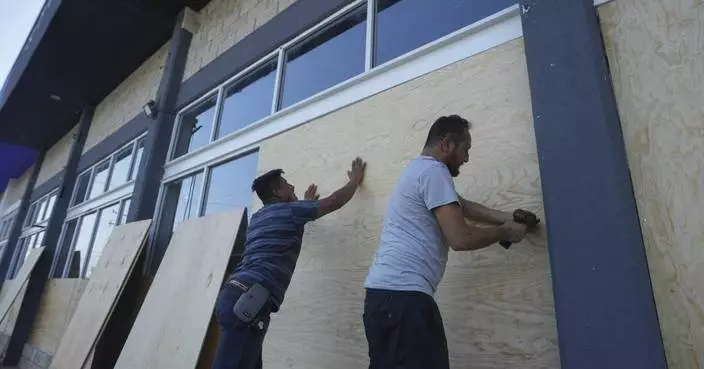Hurricane Beryl's explosive growth into an unprecedented early whopper of a storm shows the literal hot water the Atlantic and Caribbean are in right now and the kind of season ahead, experts said.
Beryl smashed multiple records even before its major-hurricane-level winds approached land. The powerful storm is acting more like monsters that form in the peak of hurricane season thanks mostly to water temperatures as hot or hotter than the region normally gets in September, five hurricane experts told The Associated Press.
Beryl set the record for earliest Category 4 with winds of at least 130 mph (209 kilometers per hour) — the first-ever Category 4 in June. It also was the earliest storm to rapidly intensify with wind speeds jumping 63 mph (102 kph) in 24 hours, going from an unnamed depression to a Category 4 in 48 hours.
Late Monday, it strengthened to a Category 5, becoming the earliest hurricane of that strength observed in the Atlantic basin on record, and only the second Category 5 hurricane in July after Hurricane Emily in 2005, the National Hurricane Center said. Category 5 storms have winds exceeding 157 mph (250 kph).
Beryl is on an unusually southern path, especially for a major hurricane, said University at Albany atmospheric scientist Kristen Corbosiero.
It made landfall Monday on the island of Carriacou with winds of up to 150 mph (240 kph), and is expected to plow through the islands of the southeast Caribbean. Beryl may stay near its current strength for another day before it begins weakening significantly, according to the late Monday forecast.
“Beryl is unprecedentedly strange,” said Weather Underground co-founder Jeff Masters, a former government hurricane meteorologist who flew into storms. “It is so far outside the climatology that you look at it and you say, ‘How did this happen in June?’”
Get used to it. Forecasters predicted months ago it was going to be a nasty year and now they are comparing it to record busy 1933 and deadly 2005 — the year of Katrina, Rita, Wilma and Dennis.
“This is the type of storm that we expect this year, these outlier things that happen when and where they shouldn't,” University of Miami tropical weather researcher Brian McNoldy said. “Not only for things to form and intensify and reach higher intensities, but increase the likelihood of rapid intensification. All of that is just coming together right now, and this won't be the last time.”
Colorado State University hurricane researcher Phil Klotzbach called Beryl “a harbinger potentially of more interesting stuff coming down the pike. Not that Beryl isn't interesting in and of itself, but even more potential threats and more — and not just a one off — maybe several of these kinds of storms coming down later.”
The water temperature around Beryl is about 2 to 3.6 degrees (1 to 2 degrees Celsius) above normal at 84 degrees (29 Celsius), which “is great if you are a hurricane,” Klotzbach said.
Warm water acts as fuel for the thunderstorms and clouds that form hurricanes. The warmer the water and thus the air at the bottom of the storm, the better the chance it will rise higher in the atmosphere and create deeper thunderstorms, said the University at Albany's Corbosiero.
Sea surface temperatures in the Atlantic and Caribbean “are above what the average September (peak season) temperature should be looking at the last 30-year average,” Masters said.
It's not just hot water at the surface that matters. The ocean heat content — which measures deeper water that storms need to keep powering up — is way beyond record levels for this time of year and at what the September peak should be, McNoldy said.
“So when you get all that heat energy you can expect some fireworks,” Masters said.
This year, there's also a significant difference between water temperature and upper air temperature throughout the tropics.
The greater that difference is, the more likely it becomes that storms will form and get bigger, said MIT hurricane expert Kerry Emanuel. “The Atlantic relative to the rest of the tropics is as warm as I've seen,” he said.
Atlantic waters have been unusually hot since March 2023 and record warm since April 2023. Klotzbach said a high pressure system that normally sets up cooling trade winds collapsed then and hasn't returned.
Corbosiero said scientists are debating what exactly climate change does to hurricanes, but have come to an agreement that it makes them more prone to rapidly intensifying, as Beryl did, and increases the strongest storms, like Beryl.
Emanuel said the slowing of Atlantic ocean currents, likely caused by climate change, may also be a factor in the warm water.
A brewing La Nina, which is a slight cooling of the Pacific that changes weather worldwide, also may be a factor. Experts say La Nina tends to depress high altitude crosswinds that decapitate hurricanes.
La Nina also usually means more hurricanes in the Atlantic and fewer in the Pacific. The Eastern Pacific had zero storms in May and June, something that's only happened twice before, Klotzbach said.
Globally, this may be a below average year for tropical cyclones, except in the Atlantic.
On Sunday night, Beryl went through eyewall replacement, which usually weakens a storm as it forms a new center, Corbosiero said. But now the storm has regained its strength.
“This is sort of our worst scenario,” she said. “We're starting early, some very severe storms. .. Unfortunately, it seems like it's playing out the way we anticipated.”
Seth Borenstein has been covering hurricanes for nearly 35 years and is on X at @borenbears
The Associated Press’ climate and environmental coverage receives financial support from multiple private foundations. AP is solely responsible for all content. Find AP’s standards for working with philanthropies, a list of supporters and funded coverage areas at AP.org.
Read more of AP’s climate coverage at http://www.apnews.com/climate-and-environment

Waves batter a pier during the pass of Hurricane Beryl in Bridgetown, Barbados, July 1, 2024. (AP Photo/Ricardo Mazalan)
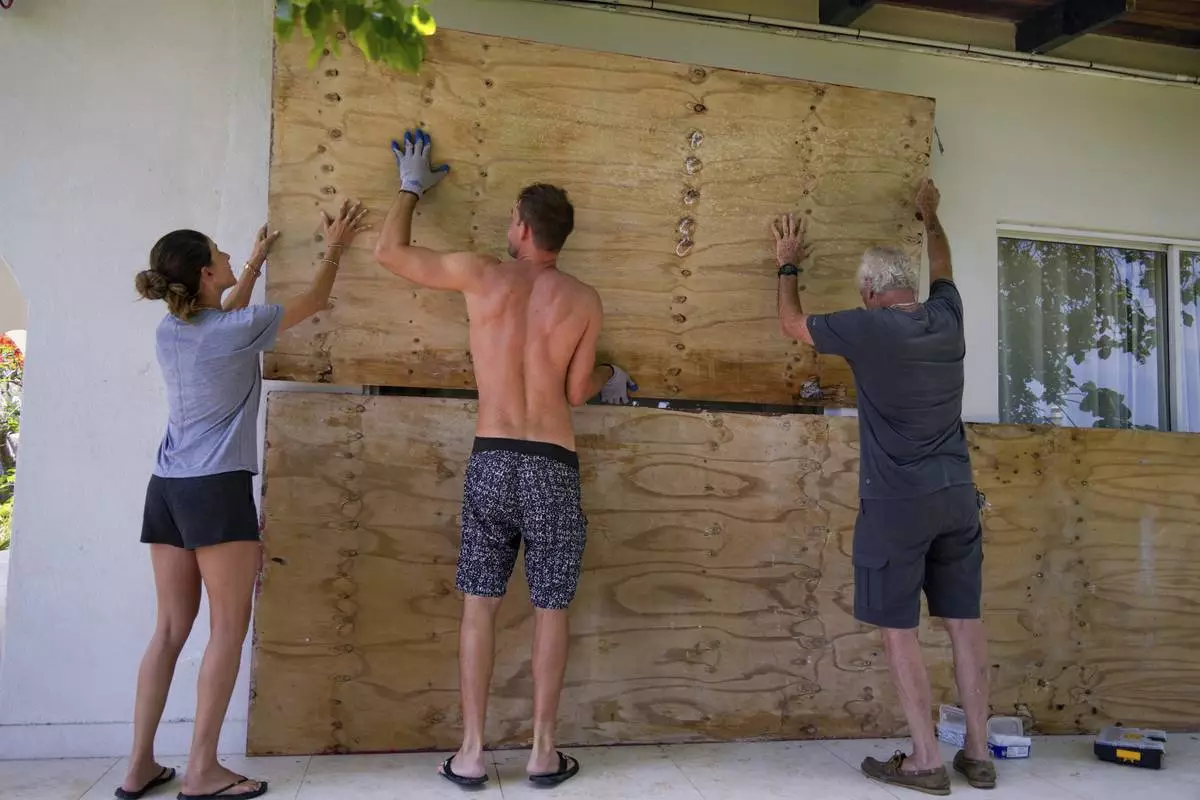
FILE - Residents cover the windows of their home in preparation for the arrival of Hurricane Beryl in Bridgetown, Barbados, June 30, 2024. (AP Photo/Ramon Espinosa, File)
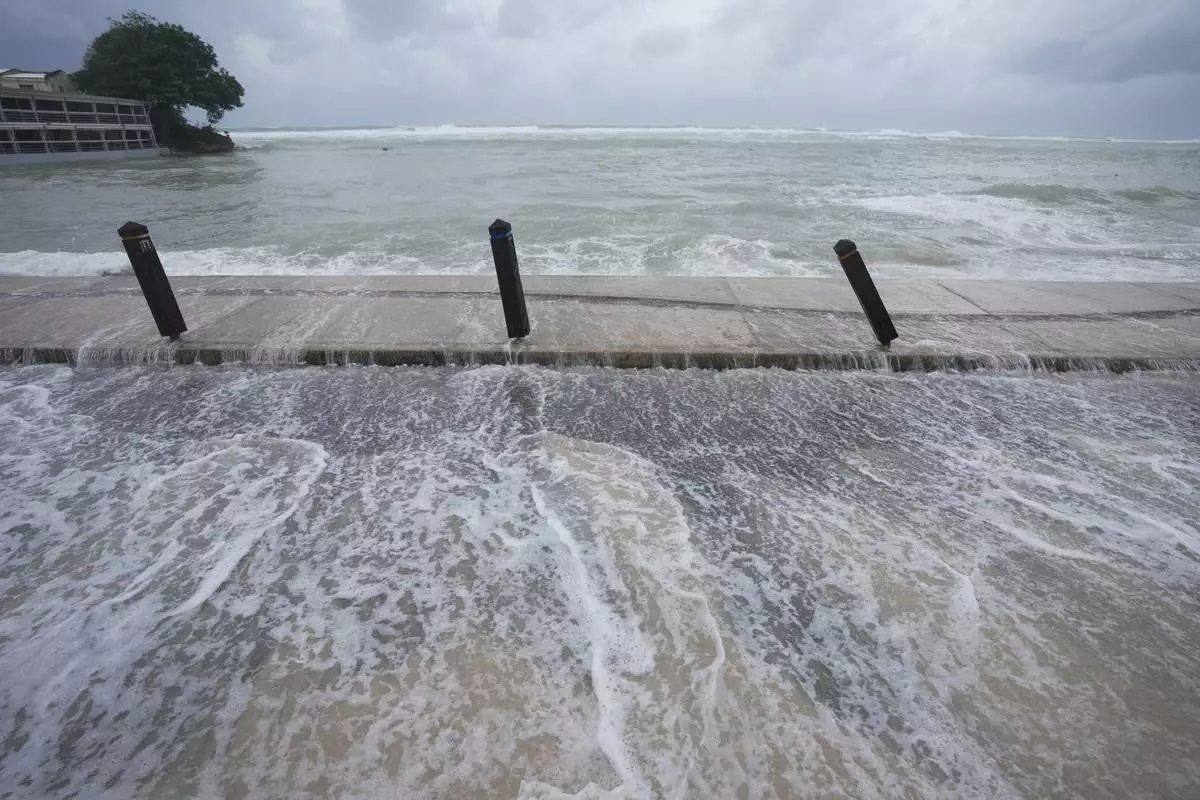
The sea floods the street after Hurricane Beryl passed through St. Lawrence, Barbados, July 1, 2024. (AP Photo/Ricardo Mazalan)

A surfer braves the waves in Carlisle Bay as Hurricane Beryl passes through Bridgetown, Barbados, July 1, 2024. (AP Photo/Ricardo Mazalan)
BENGALURU, India (AP) — Months of scorching temperatures sometimes over 50 degrees Celsius (122 Fahrenheit) in parts of India this year — its worst heat wave in over a decade — left hundreds dead or ill. But the official number of deaths listed in government reports barely scratches the surface of the true toll and that's affecting future preparations for similar swelters, according to public health experts.
India now has a bit of respite from the intense heat, and a different set of extreme weather problems as monsoon rain lashes the northeast, but for months the extreme heat took a toll on large swaths of the country, particularly in northern India, where government officials reported at least 110 heat-related deaths.
Public health experts say the true number of heat-related deaths is likely in the thousands but because heat is often not listed as a reason on a death certificate many heat deaths don't get counted in official figures. The worry, they say, is that undercounting the deaths means the heat wave problem isn't as prioritized as it should be, and officials are missing out on ways to prepare their residents for the scorching temperatures.
All of India’s warmest years on record have been in the last decade. Studies by public health experts found that up to 1,116 people have died every year between 2008 and 2019 due to heat.
As part of his work in public health, Srinath Reddy, the founder of the Public Health Foundation of India, has advised state governments on how to factor in heat when recording deaths.
He found that as a result of “incomplete reporting, delayed reporting and misclassification of deaths,” heat-related deaths are significantly undercounted around the country. Despite national guidelines for recording deaths, many doctors — especially those in overcrowded public hospitals where resources are already strained — don’t follow it, he said.
“Most doctors just record the immediate cause of death and attribution to environmental triggers like heat are not recorded,” Reddy said. That's because heat deaths can be classified as exertional or non-exertional: Exertional is when a person dies due to direct exposure to high temperatures and non-exertional is when young children, older people or people with pre-existing health conditions become seriously ill or sometimes die from the heat, even if indoors.
“The heatwave is the final straw for the second category of people," said Dileep Mavalankar, former head of the Indian Institute of Public Health in Gandhinagar. “Most people dying during heat waves belong to this category but their deaths are not recorded as connected to the heat.”
Mavalankar agreed the official number of heat deaths this year is an undercount. He said there were 40,000 recorded case of heat stroke, but only 110 deaths. “This is just 0.3% of the total number of heatstroke cases recorded, but usually heat deaths should be 20 to 30% of heatstroke cases,” he said.
“We need to be counting deaths better," Mavalankar said. “That is the only way we will know how severe the consequences of extreme heat are."
In his former role at the Indian Institute of Public Health in Gandhinagar, Gujarat, Mavalankar was instrumental in developing India’s first-ever heat action plan for the city of Ahmedabad in 2013, three years after more than 1,300 people died there during a heat wave.
The heat plan included measures like increasing access to shaded areas for outdoor workers, converting relatively cool public buildings to temporary shelters for people without homes or access to electricity and ensuring hospitals have adequate medical supplies and staff during heat waves.
In the years that followed, Mavalankar and his team studied the impact of the heat plan by counting death tolls in subsequent hot summers. Because of a lack of data on heat deaths specifically, the team looked at deaths from all causes, which spikes during heat waves, and used the number of excess deaths to determine how many deaths were likely caused by heat.
They estimate that the heat action plan had helped reduce the number of fatalities during heat waves by up to 40%.
Having that data, while imperfect, Mavalankar said, allowed the city to adequately prepare itself for extreme heat, and do more of what worked in the future.
But he said the lack of data elsewhere makes it difficult to replicate the results in Ahmedabad on a national level.
“Not reporting these deaths, sharing data, is like the Indian Meteorological Department not sharing weather data," he said. “We can easily do this across the country but we’ve not decided that we should do it.”
The Indian government collects data on heat-related deaths through the health ministry’s National Centre for Disease Control which is then shared with the National Disaster Management Agency. The agency then shares the data as a total nationwide figure for the year, but a state by state breakdown is not publicly available.
The National Crime Records Bureau also collects heat-related death data as part of their accounting of deaths due to “forces of nature” and publishes those figures.
But there are huge discrepancies. In 2020, the last year with publicly available data on heat deaths from both official sources, the crime records bureau recorded 530 deaths from heatstroke, but the disaster agency reported just four heat-related deaths.
The Associated Press contacted India’s health ministry spokesperson, the NCDC and the NDMA to comment on the discrepancy but did not receive a response.
Getting better data can answer a whole host of questions about who is most vulnerable and how best to help them, said Bharghav Krishna, a public health expert and a fellow at the Sustainable Futures Collaborative thinktank, “especially with respect to identifying who is dying, where they’re dying, what are they doing when they’re dying.”
Krishna thinks that the data currently collected, while inadequate, can at least provide some insight for policymakers and researchers and force at least some action if its shared with the right people.
But Malavankar said the issues of data collection are more systemic, and that needs to be urgently addressed.
“We have not done a national census since 2011, not having numbers is our national weakness,” he said.
Follow Sibi Arasu on X at @sibi123
The Associated Press’ climate and environmental coverage receives financial support from multiple private foundations. AP is solely responsible for all content. Find AP’s standards for working with philanthropies, a list of supporters and funded coverage areas at AP.org.
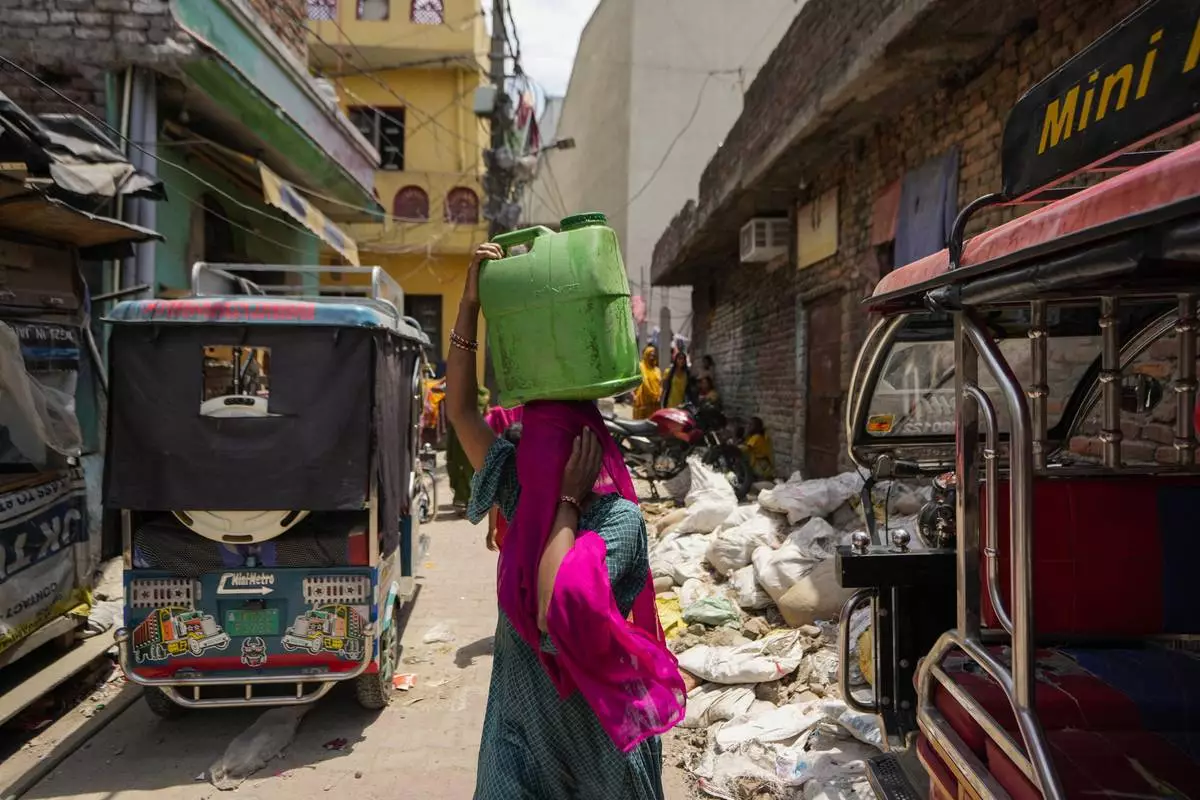
FILE - A woman walks carrying water collected from a public tap in a shanty town on the outskirts of Jammu, India, Tuesday, June 18, 2024. The official number of heat deaths listed in government reports barely scratches the surface of the true toll and that's affecting future preparations for similar swelters, according to public health experts. (AP Photo/Channi Anand, File)
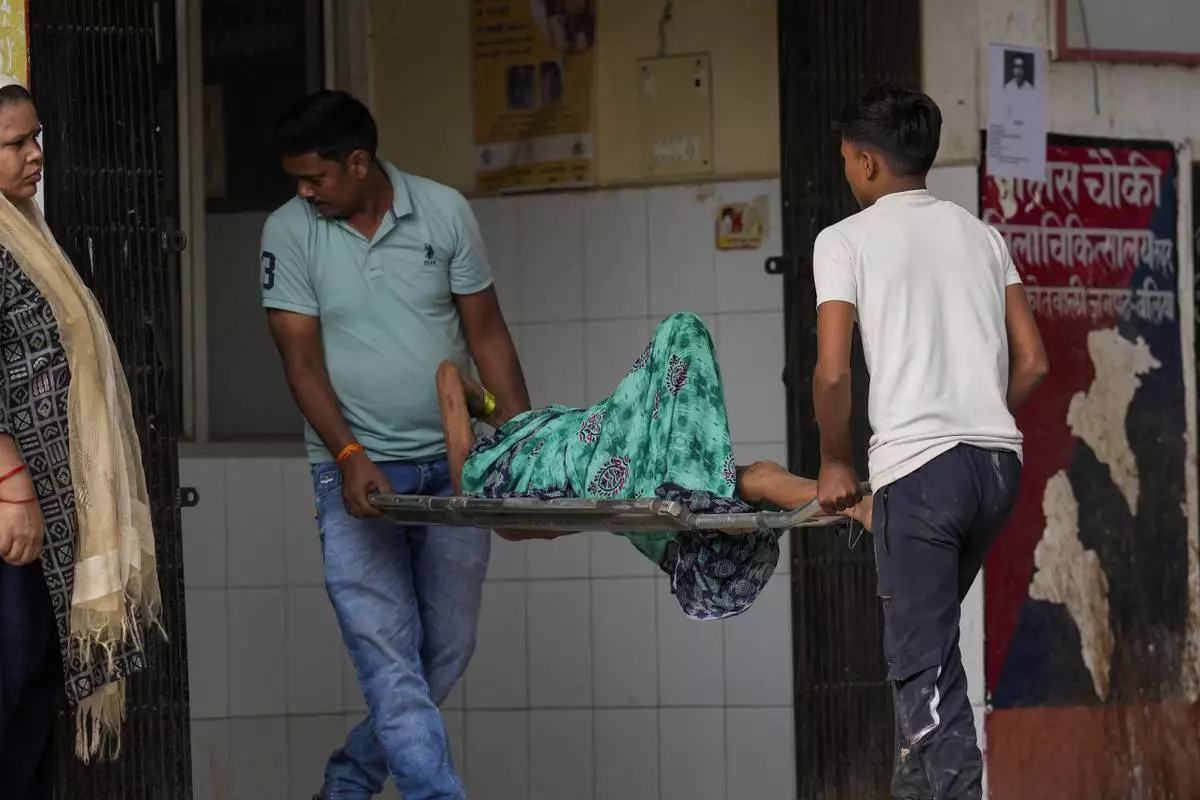
FILE - An elderly woman suffering from a heat-related ailment is brought to an overcrowded government district hospital in Ballia, Uttar Pradesh state, India, June 20, 2023. The official number of heat deaths listed in government reports barely scratches the surface of the true toll and that's affecting future preparations for similar swelters, according to public health experts. (AP Photo/Rajesh Kumar Singh, File)
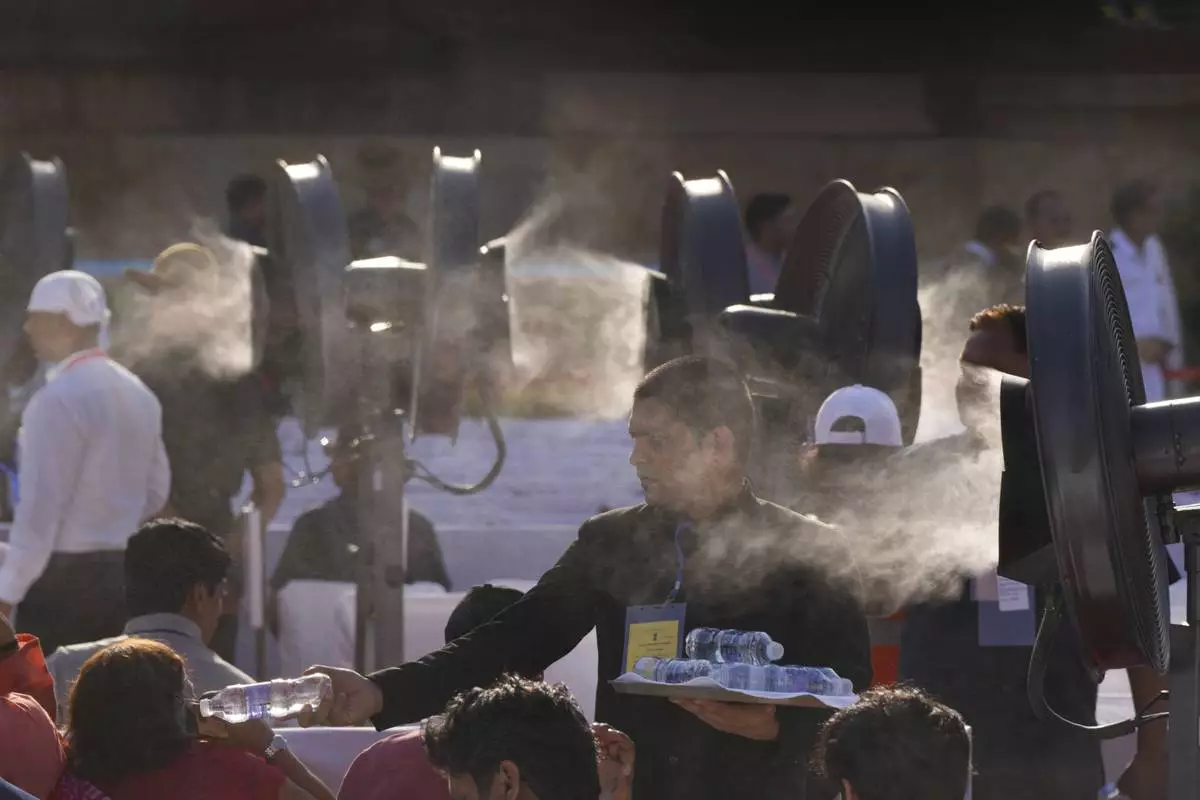
FILE - A worker distributes water bottles to guests sitting near coolers to ward off the heat at the swearing-in ceremony of Narendra Modi as Indian prime minister at the Indian presidential palace in New Delhi, India, June 9, 2024. The official number of heat deaths listed in government reports barely scratches the surface of the true toll and that's affecting future preparations for similar swelters, according to public health experts. (AP Photo/Manish Swarup, File)
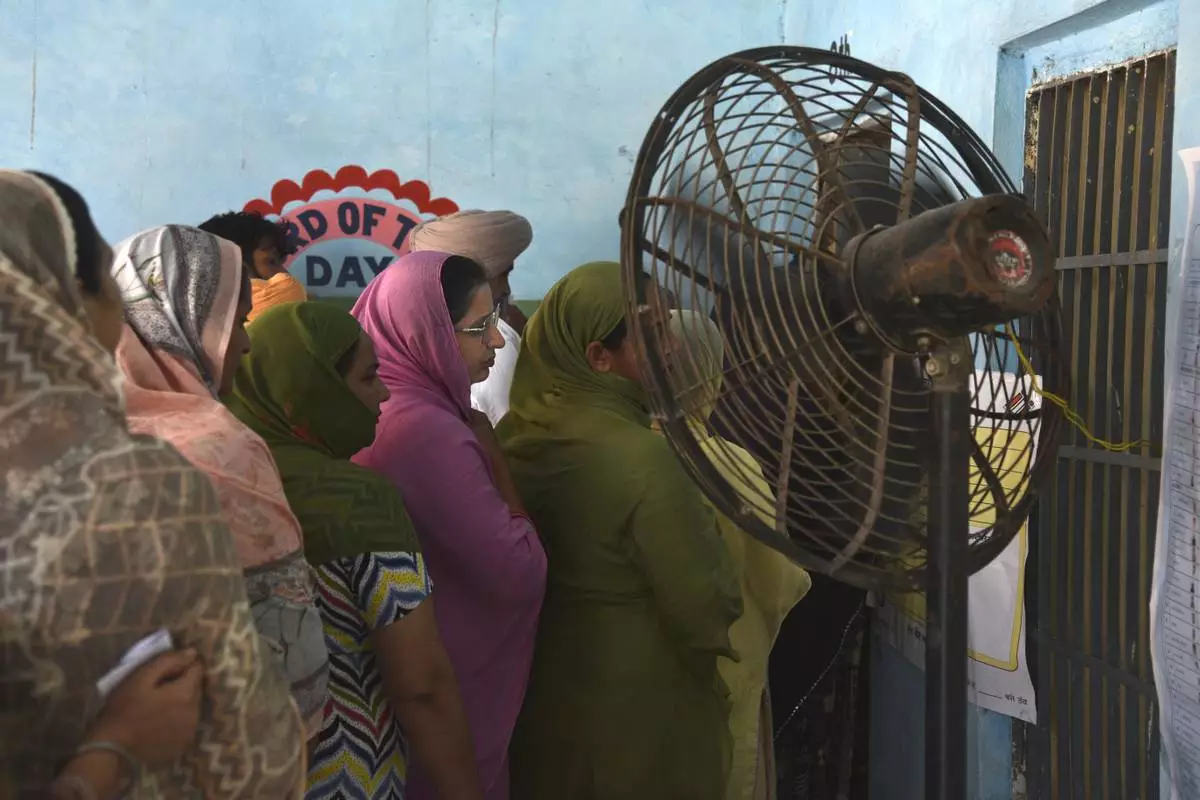
FILE - Women wait in a queue to cast their vote standing in front of a fan at a polling booth on a hot summer day during the seventh and the last phase of the general election, near Amritsar, India, Saturday, June 1, 2024. The official number of heat deaths listed in government reports barely scratches the surface of the true toll and that's affecting future preparations for similar swelters, according to public health experts. (AP Photo/Prabhjot Gill, File)

FILE - A man drinks water at a roadside stall serving free drinking water to commuters as a heat wave continues to grip the Indian capital, New Delhi, India, May 22, 2024. The official number of heat deaths listed in government reports barely scratches the surface of the true toll and that's affecting future preparations for similar swelters, according to public health experts. (AP Photo/Manish Swarup, File)
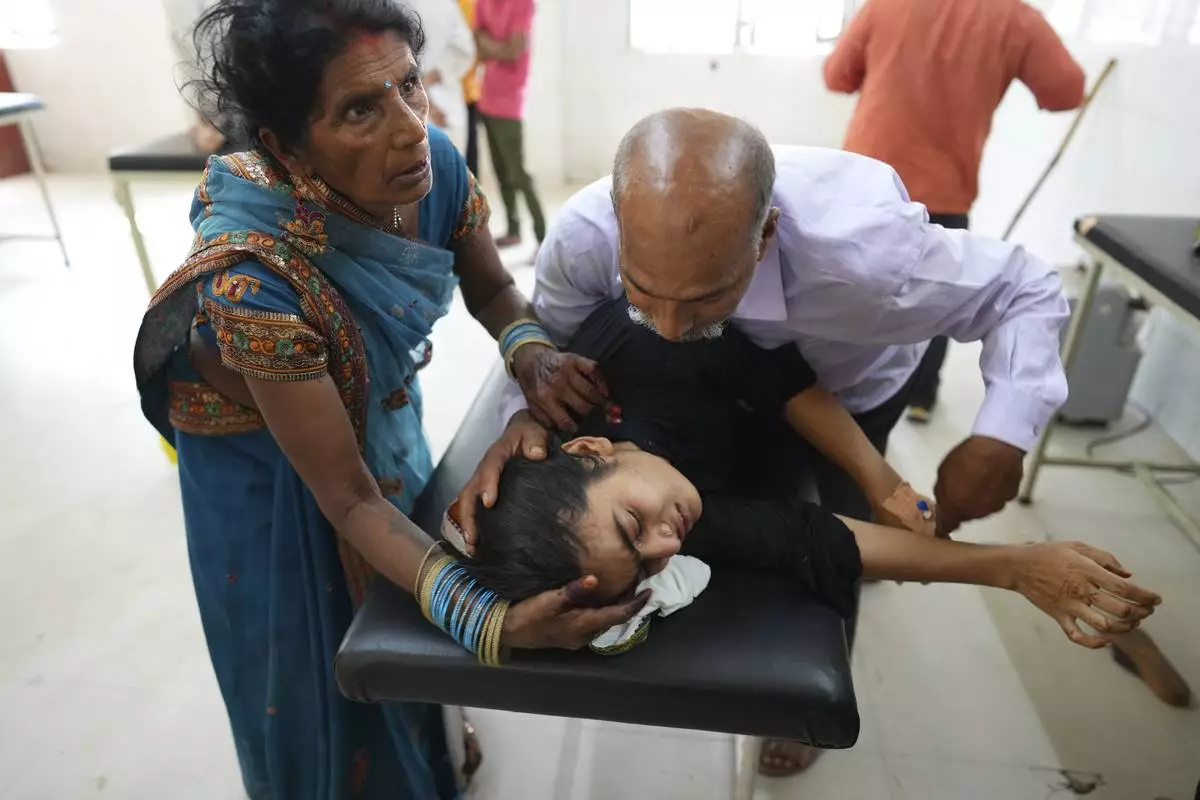
FILE - A father tries to calm his daughter suffering from a heat-related ailment as she is brought to the government district hospital in Ballia, Uttar Pradesh state, India, June 19, 2023. The official number of heat deaths listed in government reports barely scratches the surface of the true toll and that's affecting future preparations for similar swelters, according to public health experts. (AP Photo/Rajesh Kumar Singh, File)
















